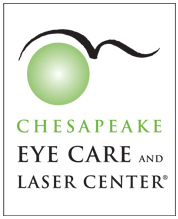The eyelids and their surrounding area are a delicate part of the face. Given time and gravity, the thin layer of skin and muscles that surround the eyes weaken and begin to sag. These changes can often impede vision and make one look tired and older. Prior to surgery, Dr. Zhao or Dr. Mehta will conduct a thorough evaluation to assess the cause of drooping eyelids. It may be a result of excess skin (dermatochalasis), weakened eyelid muscles (ptosis) or even weakened eyebrow muscles. There are several outpatient surgical procedures that can help open the eyes and improve the overall appearance of the upper face.
View Video
Upper Eyelid Blepharoplasty (Eyelid Lift)
Over time, the thin layer of skin that surrounds the eyes may sag. This often results in making one appear tired and older. The drooping skin may also interfere with the field of vision. To recapture a refreshed, youthful appearance, and ensure full peripheral vision, an eyelid lift, also known as blepharoplasty, may be performed to remove excess skin from the upper eyelids, lift sagging eyelids, or address fatty pockets and excess skin under the eyes. A blepharoplasty may be performed alone or in conjunction with other procedures to achieve rejuvenation of the periocular region and improve a patient’s field of vision.
Blepharoplasty is an outpatient procedure performed in our private surgical suite. Typically, the procedure is done with sedation and local anesthetic. An incision is made in the creases of the natural upper eyelid to remove excess skin and fat. If the eyelid is drooping due to muscle laxity, the muscle can be tightened to raise the eyelid. Bruising is usually minimal and patients may expect to return to work in approximately one week. Through a thorough discussion with Dr. Zhao or Dr. Mehta, they will answer any questions related to the procedure and create a tailored approach for each patient's specific needs.

Lower Eyelid Blepharoplasty (Puffy Pockets and Loose Skin)
There are a host of changes that occur to the lower lids over time, exacerbated by genetics, sun damage and other environmental factors. Skin laxity, fat prolapse, eyelid laxity, hollow depressions and mid-face descent all lead to various eyelid appearances. Each patient requires a thorough evaluation to determine which factors contribute to their appearance. A procedure called a lower eyelid blepharoplasty can help to address these various aging changes. Through either an internal and/or external eyelid incision beneath the lashes, skin can be tightened, fat can be removed or contoured and the eyelid can be supported to help improve the overall appearance. In some cases, a medium depth acid peel will be performed in conjunction to help with skin tightening. This surgery can be done in combination with upper eyelid or eyebrow surgery and is typically performed with sedation and local anesthesia. Through a thorough discussion with Dr. Zhao or Dr. Mehta, they will answer any questions related to the procedure and create a tailored approach for each patient's specific needs.

Eyebrow Lift
Frequently, droopy eyelids are related to the upper eyebrows. As the face ages, the brows tend to droop and weigh on the upper eyelid area. If the problem lies in the brow, a brow lift may be the recommended procedure. There are various approaches to raising the brows, including a direct brow lift, a transblepharoplasty brow lift or a trichophytic brow lift. With the trichophytic brow lift, the incision is made just behind the hairline and tissue of the scalp and forehead are lifted. The brow tissues are resuspended upward, resulting in rejuvenation of the upper eyelids, a decrease in crow’s feet formation and a more awake, refreshed appearance. This type of brow lift is best for patients who wear bangs and have a higher forehead so the incision can be hidden. Transblepharoplasty brow lifts can be performed in conjunction with upper eyelid surgery to help stabilize and support the brow. Direct brow lifts are typically recommended for men with bushy eyebrows and deeper forehead lines since the incision is made just above the eyebrow hairs.

Ptosis (Weak upper eyelid muscle)
Ptosis is the drooping of the upper eyelid to the extent it partially covers the pupil. It can affect one or both eyes. As we age, the muscles that hold up our eyelids weaken or loosen and can cause our lids to droop. This results in a tired, sleepy appearance and reduces peripheral vision. Some people experience brow or forehead aches and fatigue at the end of the day from constantly raising their brows to see. Ptosis may also be caused by an injury, birth defect or neurological disorder and is seen in both adults and children. Surgical repair helps improve vision and provides a more vibrant appearance. There are various surgical approaches to address ptosis including an external approach, an internal approach, and even the use of suspension slings in very severe cases. Ptosis surgery is very delicate and requires a thorough understanding of the anatomy and function of the muscle. Through a thorough discussion with Dr. Zhao or Dr. Mehta, they will answer any questions related to the procedure and create a tailored approach for each patient's specific needs.
View Video






